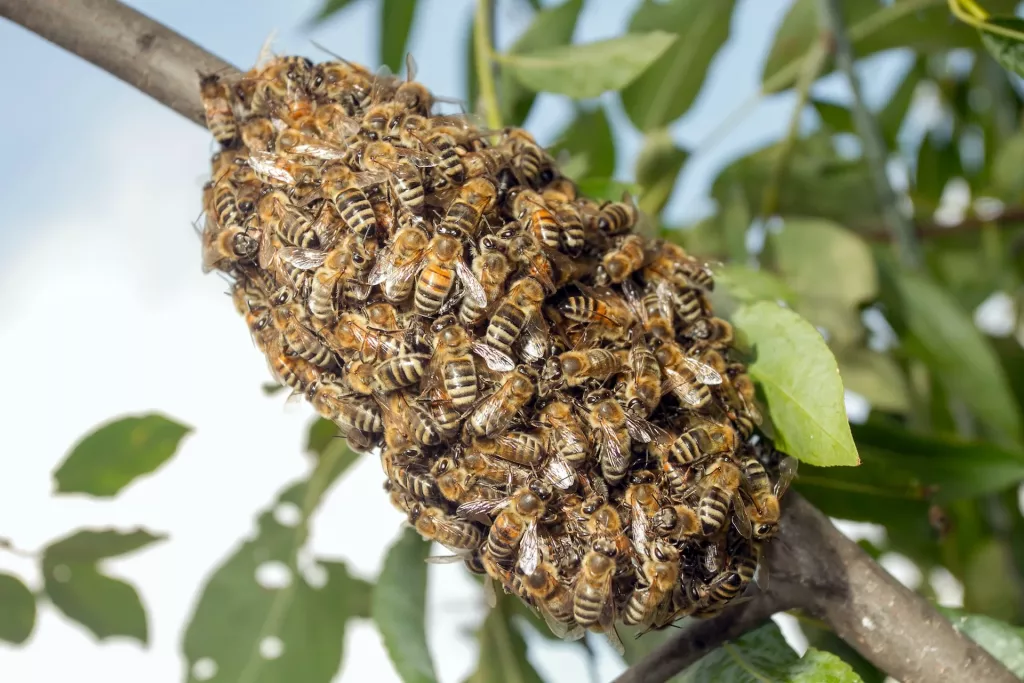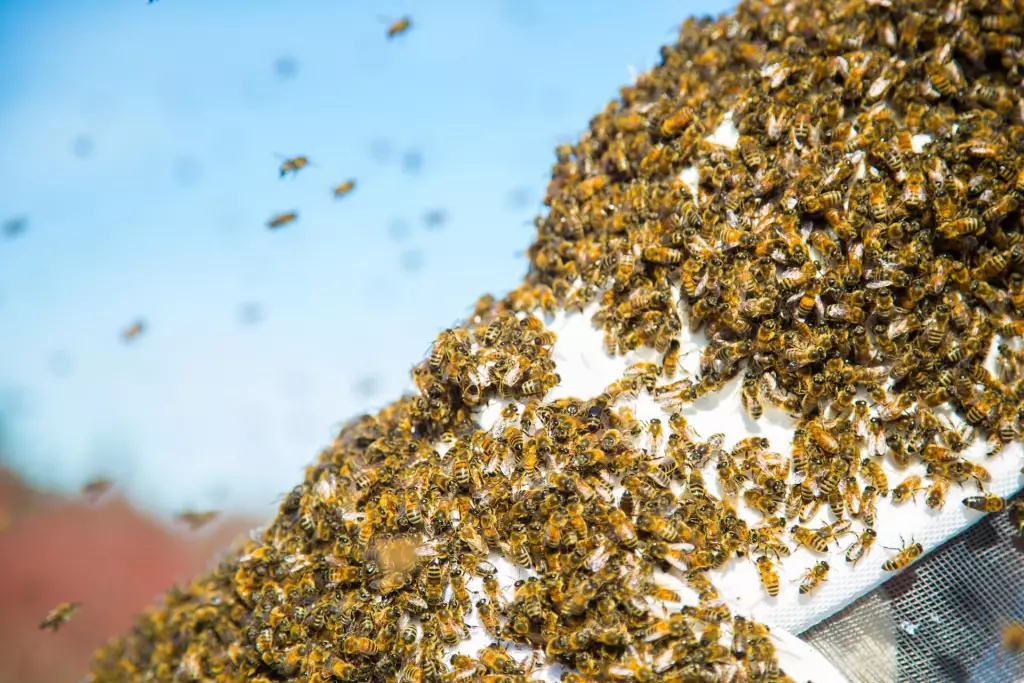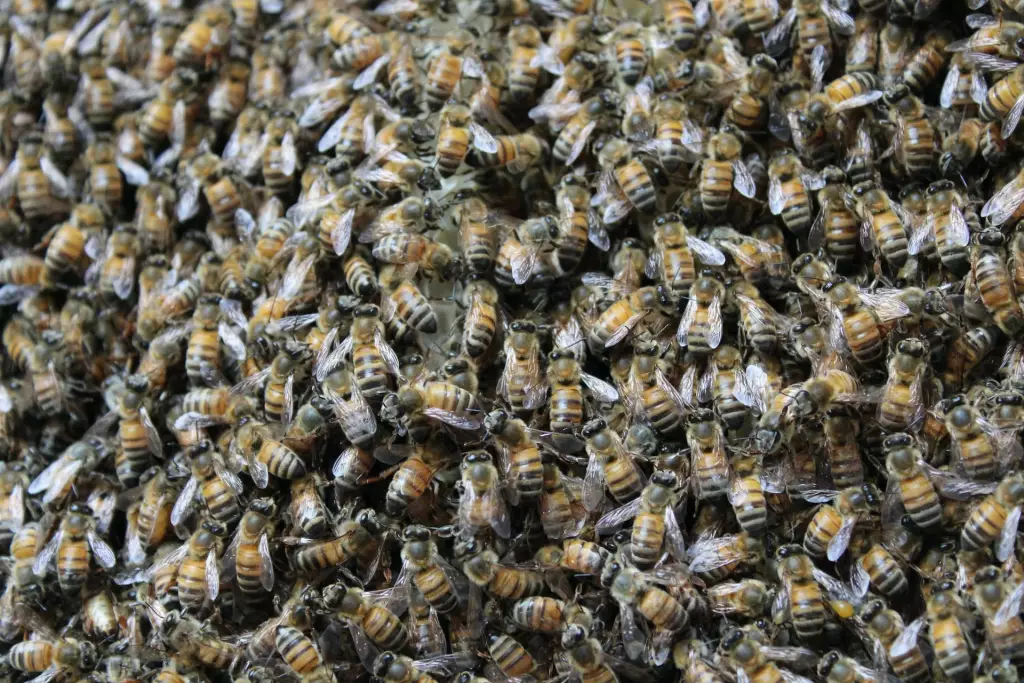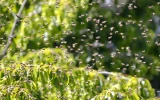Will Bees Swarm Without a Queen? (And 3 Other Reasons)
When it’s swarming time, the queen bee will leave the hive with around half of the colony and travel to a temporary area while they search for a new home. But are there instances when the bees swarm without a queen? Let’s find out.
Bees will never swarm without a queen. They swarm with the queen for colony growth, continuity, and order. Therefore, a queenless colony cannot go swarming. A swarm of tens of thousands of workers and drones always leaves with a queen who has mated or is capable of mating and reproducing.
For swarming to occur, bee colonies must always have at least one queen present. If a hive loses its queen, you can either requeen it or let the workers raise a replacement who will take over as the hive's ruler. A queenless swarm, however, may occasionally be found.
Summary
- Multiple swarms can frequently occur in a beehive. Each swarm will always bring a queen with it.
- The current old mated queen leads the primary swarm, while virgin queens lead after swarms.
- Giving your swarm a frame of brood from another hive can assist them in raising a new queen if you still suspect your swarm is lacking a queen.

On this page:
Bees Always Swarm With A Queen
A bee colony may swarm more than once. A phenomenon known as "after-swarming" occasionally occurs after the primary swarm departs the hive with the current queen.
The primary swarm is the first and biggest one, followed by secondary and frequently tertiary swarms. When the swarms go one after the other, the old queen departs with the primary swarm, and the secondary and tertiary swarms may depart with virgin queens who have not yet mated. Occasionally, the new queens may have already mated.
A colony will begin the process of raising a new queen in preparation for swarming. The idea is to leave the original hive with a virgin queen so that the colony can remain intact and carry on as before. For this reason, numerous queen chambers are constructed, which may lead to a number of virgin queens.
You may occasionally witness a second swarm leave the hive after the old queen departs with a sizable portion of the colony. This secondary afterswarm often consists of fewer individuals and a virgin queen.
Sometimes a colony appears to be swarming repeatedly while, in reality, the same swarm is returning to the hive and then attempting again on a different day. This depends on the local weather. Either the queen decides not to accompany them, gets separated from them, gets eaten by a bird, or gets lost.

If the swarm loses its queen, it will have to try again later, or it will perish, thus making it appear that there are several swarms instead of one. However, if you spot a swarm in one location, it probably has one queen with it.
Instances When A Swarm Doesn’t Have A Queen
There have been instances where beekeepers have discovered a swarm without a queen. It's possible that the queen bee lost her way while flying or became separated from the swarm.
Even while the worker bees make an effort to surround and guard the queen, they are still extremely vulnerable when they are out in the open. The queen bee might be eaten by a bird that preys on them.
Some beekeepers might also lose the queen when catching the swarm, leaving them with a swarm that is queenless.
Another scenario is that you came upon a group of lost worker bees. These are scout bees that leave the temporary swarm cluster in search of a prospective new nest site and come back to share their findings.
By dark, the majority of the scout bees will go back to the original cluster location only to discover their hive has vanished with the queen.
When the swarm was captured while some of the bees were out foraging, such bees would return to the location only to discover that their queen had left. The bees left behind that may look like a swarm will be discovered without a queen. Nonetheless, such bees do not remain queenless for very long because they often return to the original hive.
Bees without a queen tend to act irritable and confused. After a week, keep checking to see whether there are any eggs in the hive. If this occurs, it implies you have a virgin queen in a swarm that you have managed to capture. A week from now, you will likely be able to see brood in the comb.
However, if you observe abnormal egg-laying behavior, particularly when there are multiple eggs in comb cells, this indicates that the brood is queenless and that the female worker bees have begun to produce eggs.
At this point, the beekeeper must either introduce a new queen right away or, in the interim, provide the workers with a frame of brood from another hive.
The colony suffers as a result of the worker bees' unfertilized egg laying and drone production. Worker bees and queens are most important for colony survival, and if the trend persists, the colony will go extinct.

Why Do Bees Swarm The Queen?
Bees swarm the queen so they can establish a new colony somewhere else that’s more suitable for their growth. They bring the queen bee with them because she’s the only one that can keep laying eggs, and the only bee that can keep order in a colony through her pheromones.
Everything the queen does, from her mating flight to her reliable, consistent egg-laying prowess, is very well planned out and organized. She is the center of attention in the hive thanks to her egg-laying ability.
Queens naturally produce less queen pheromone as they get older. Therefore, colonies led by senior queens are more likely to swarm than those led by first year queens. Bees swarm during the warmer months, typically from April to June.
Will Killing Or Removing The Queen Prevent Swarming?
Removing the queen from the hive could probably stop swarming, but doing so would reduce the amount of honey produced.
If the queen was removed too soon, it could weaken your foragers' ability later on when the flow is strong, which might reduce rather than increase your honey production.
If you leave it just a little bit too late to remove the queen, they might continue making preparations for a swarm and swarm nonetheless.
At the appropriate time, you may opt to split the hive. You could always pinch the original queen later and perform a newspaper combine after the crucial period of swarming has passed.
You can do this if the donor colony successfully develops a good replacement queen and all else goes according to plan, and you truly don't want another colony. But it's another option to sell or give the split to interested keepers.
Do Swarms Have Virgin Queens?
Bees swarming with a virgin queen is not an unusual thing. Depending on its strength, the same colony may produce several swarms after the old and mated queen took with her a sizable portion of the colony during the prime swarm.
The first new queen to emerge from the cell takes a smaller group of bees, conducts mating, and returns only once the mating process is complete in order to begin laying eggs.
Other possible queens that emerge from the cells may likewise take fewer bees and start searching for a new nest. This is only possible if the hive has a sizable population that can accommodate small swarms, also called castoffs.
However, if there are too many castoffs in a short period of time, it could result in a colony that is weaker, has fewer honey supplies, and may not survive the upcoming winter.

How Many Queens Are In A Swarm?
The colony will give off one or more casts if it is strong enough. These are small swarms with a virgin queen at the head. When compared to a prime swarm, cast swarms are small.
A colony can keep producing casts that are getting smaller and smaller. Casts may contain more than one queen if more than one queen emerges. Sometimes you'll open a hive and several queens will emerge simultaneously. Catching a dozen virgins running around a busy brood box can be a nightmare.
It is unusual to find more than one queen in a swarm. You may capture them all and gather them into a hive, letting them choose the strongest queen while eliminating the weaker ones. Natural selection is a process that we shouldn't tamper with.
There may be multiple queens in swarms because there aren't enough worker bees to create viable swarms for all the queens. Only cast swarms—the smaller tail-end swarms—typically experience this. It'll be handled by the bees, so don't worry.

